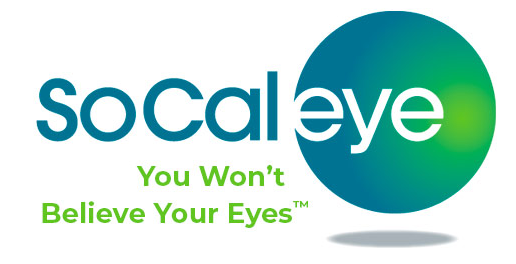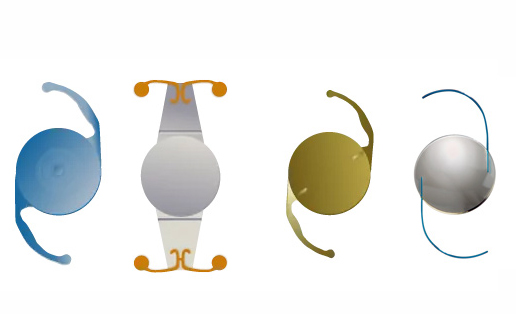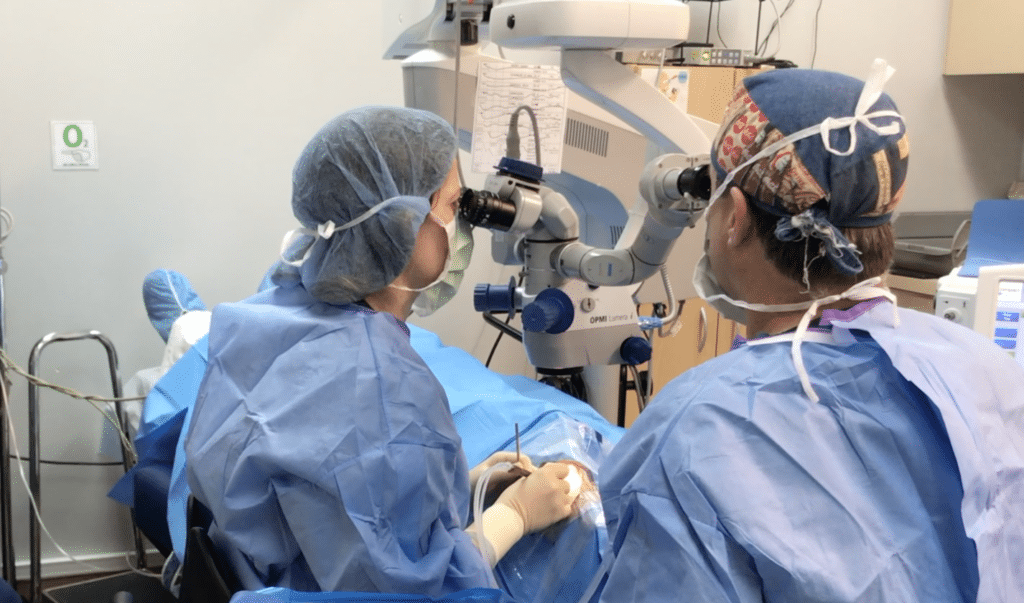SoCal Eye – Cataracts, Long Beach
Cataracts are the leading cause of vision loss in the United States each year with over 24 million people over the age of 40 affected by the condition. Cataracts are most commonly treated with surgery and over 3.5 million cataract surgeries are performed every year making it the most common surgical procedure. SoCal Eye cataract surgeons have been performing cataract surgery in Southern California since 1964 and are considered to be leaders in cataract treatment. We serve patients from LA and Orange Counties including Long Beach, Huntington Beach and Garden Grove. Treatment starts with a Comprehensive Eye Exam. Schedule an Appointment today at (562) 531-2020 or send us an Online Consultation Request
What is a Cataract/ What are Cataracts?
A cataract is the clouding of the eye’s internal focusing lens. The lens is located behind the iris, the colored part of the eye and normally focuses light on the retina, which sends the image through the optic nerve to the brain. If the lens is clouded, light is scattered and is no longer able to be focused properly. This causes vision problems. For most people, cataracts gradually develop throughout life and detectable signs and symptoms often appear in patients in their 50s or 60s. In fact, more than half of all Americans age 80 or older have experienced the effects of cataracts.
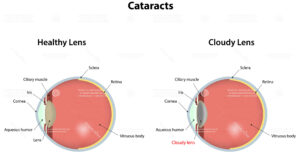
At first, you may not notice that you have a cataract. But over time, cataracts can make your vision blurry, hazy, or less colorful. You may have trouble reading or doing other everyday activities. Unlike vision loss due to glaucoma, macular degeneration and diabetic retinopathy, vision loss from a cataract is reversible. The good news is that cataract surgery is very safe and corrects vision problems caused by cataracts.
Cataracts – Causes & Risk Factors
- Most cataracts are caused by normal changes in a person’s eyes as they get older and will begin to cause noticeable vision loss after age 60. The lens in a young person’s eye is clear. Around age 40, the proteins in the lens of the eye start to break down, causing the transparent lens to become cloudy and yellow. When these changes occur, the lens is then called a Cataract. Over time, the cataract gets more severe and clouds more of the lens.
- Previous Eye Injuries/ Glaucoma Surgery
- Diabetes
- Medications – Steroids/Statins
- Excessive Sun Exposure/ Ultraviolet Radiation
- Obesity
- Family History
Cataract Symptoms and Detection:
What are the Symptoms of Cataracts?
Most cataracts develop in people over age 60, but can occur in infants and young children or as a result of trauma or medications. Usually, cataracts develop in both eyes, but one may be worse than the other.
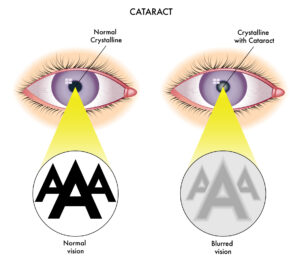
Cataracts generally form very slowly and symptoms are not always immediately recognized. Signs and symptoms of a cataract may include:
- Blurred or hazy vision. Cloudy, blurry, foggy, or filmy.
- Reduced-intensity of colors/ Changes in the way color appears.
- Increased sensitivity to glare from lights, particularly when driving at night.
- Increased difficulty seeing at night.
- Problems with glare during the day
- Double vision in the affected eye
- Nearsightedness(in older people)/ Change in the eyeglass prescription.
How are Cataracts Diagnosed/ Detected?
Cataracts form very slowly and vision loss is not immediately recognized. Cataracts are diagnosed through a comprehensive eye examination performed by an Eye Physician.
Cataract Prevention:
There are no clinically proven approaches to preventing cataracts but some simple preventive strategies can slow the onset.
How can I prevent cataracts?
- Reduce Sun Exposure: Wear sunglasses and a hat with a brim to block the sun.
- Smoking/Drinking: Decrease or stop smoking / excessive alcohol consumption.
- Diet: Increasing antioxidant vitamin consumption by eating more leafy green vegetables and taking nutritional supplements.
- Supplements: Supplements such as lutein and zeaxanthin, vitamin C, vitamin E and zinc have been linked to heighten eye health and to reducing the risk of certain eye diseases, including cataracts.
- Comprehensive Eye Exam: If you’re age 60 or older, getting an annual eye exam is recommended.
SoCal Eye – Cataracts, Long Beach:
Cataracts, Long Beach. All treatment begins with a Consultation with a SoCal Eye Cataract Specialist or Cataract Surgeon in Long Beach. At this consultation, the Ophthalmologist will perform a complete eye exam with dilation and discuss Lens Implant options that are right for you. SoCal Eye feels strongly that patients should be informed and educated on all applicable lens technologies when they make their final IOL selection. The right choice is never a default to a Premium IOL.
Cataract Treatment for patients in Long Beach, Cypress, Cerritos and Garden Grove. Schedule an Appointment today at (562) 531-2020 or send us an Online Consultation Request
